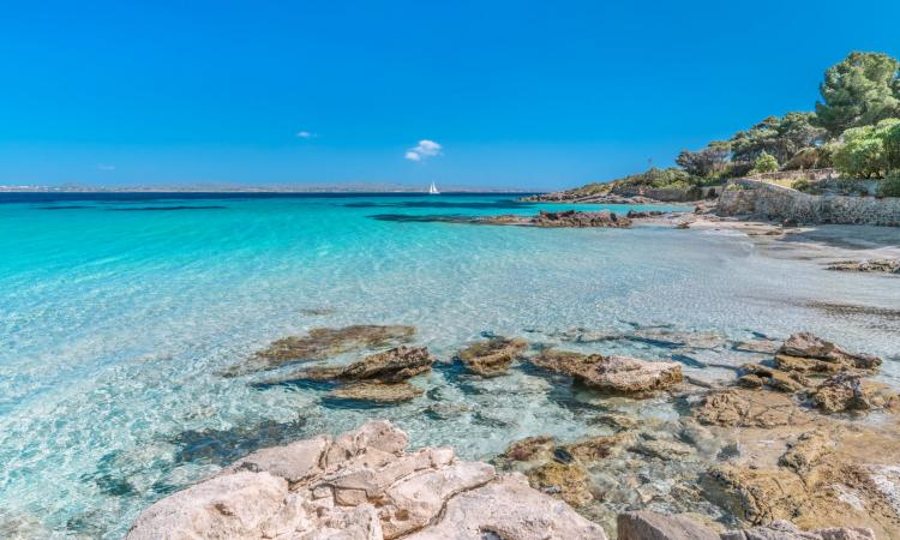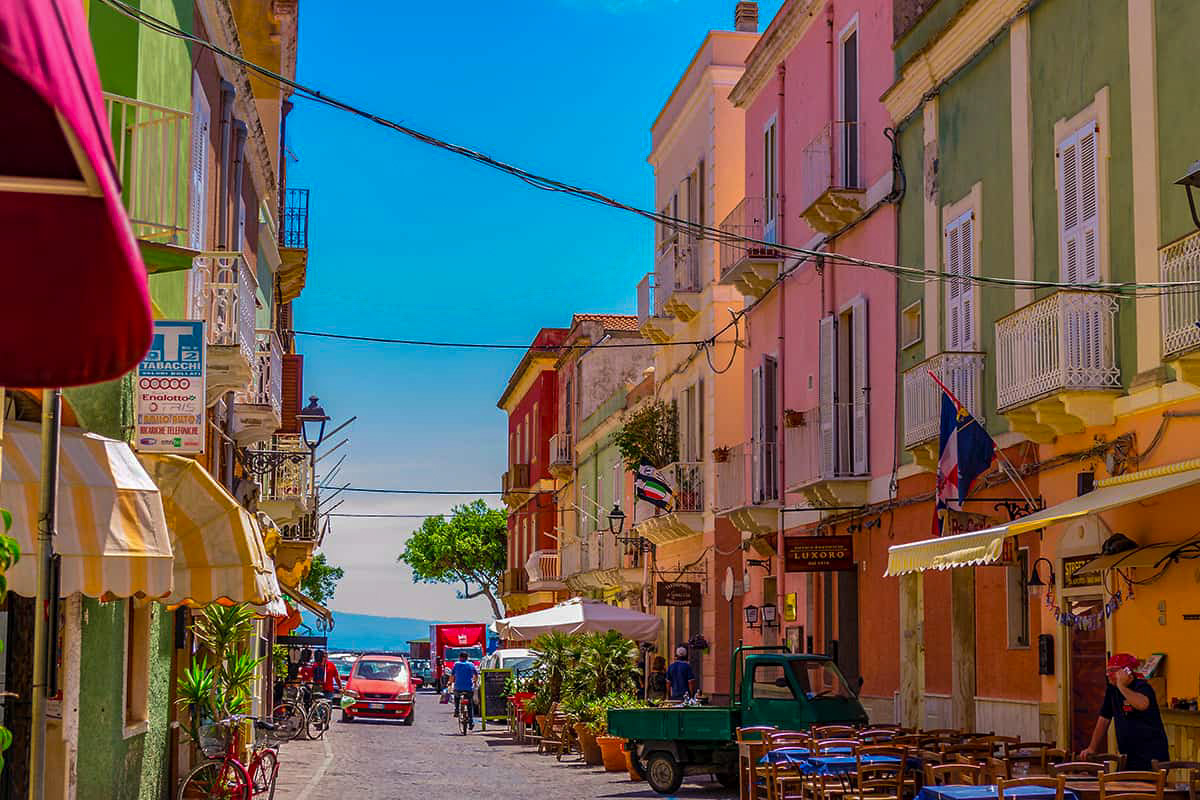Carloforte, the Ligurian pearl of Sardinia: what to see on the island of San Pietro
Carloforte is a beautiful village that tells a unique story, suspended between the Sardinia and the Liguriabetween the waves of the Mediterranean and the traditions of the fishermen from Pegli. Located on theIsland of San Pietro, this place retains an authentic soul and timeless charm. It is worth reading this article because I will guide you through the history, landscapes and curiosities of one of the most beautiful villages in Italywhere Ligurian culture meets the colours and scents of south-western Sardinia.
Carloforte: a village between Liguria and Sardinia
The heart of Carloforte beats between tight paved streets, the caruggi typical and the scent of the sea coming from the marina. Founded in 1738 from Ligurian families from the Tunisian island of Tabarkathe country owes its name to the King Charles Emmanuel IIIwhich granted the inhabitants the permission to colonise the island of San Pietro. The architecture of the village reflects its origins, with colourful houses, white stone arch giving access to small squares and flowery balconies overlooking the waterfront.
Today Carloforte retains an authentic soul: life here flows slowly, between chatting in historic bars, fresh fish markets and spectacular sunsets. This link with the past can be felt not only in the stones of the wallsbut also in traditional recipes based on tunawhich tell the story of the fishermen that have made the island famous.

San Pietro: a unique island in the Mediterranean
L'Island of San Pietro is the only territory in the municipality of Carloforte and represents a microcosm rich in natural beauty. Located in theSulcis archipelagois connected to Sardinia by daily ferries, and preserves fascinating landscapes, from the sheer cliffs to the golden sandy beaches.
The territory is protected and is home to rare species such as the queen falcon and the pink flamingos at saltworks. Visiting San Pietro means immersing yourself in unspoilt nature, between crescent moon of sand and rocky coastlines shaped by the wind. The presence of watchtowers and a Italy's westernmost 19th century lighthouse a Cape Sandalwood recalls the strategic importance of the island over the centuries.
What to see in Carloforte
Among the attractions not to be missed is the San Vittorio Towerbuilt for defensive purposes and today home to a multimedia museum inaugurated in 2016. Walking along the village streets, you will discover the via Solferino and others lanes rich in workshops, all the way to the monument to Charles Emmanuel IIIsymbol of gratitude to the sovereign who allowed the village to be founded.
There is no shortage of panoramic views and romantic spots, such as the romantic Cala Vinagra, small inlet protected by sheer cliffs. And for those who love ancient history, theisland settlement of San Pietro reveals traces ranging from the period Punic and Roman until theearly 20th centurywith remains of fortifications and coastal towers.

The island: nature and traditions
L'island is a paradise for lovers of the sea and adventure. Its coastline alternates between long stretches of sandy rockywith inlets hidden and crystal-clear waters perfect for snorkelling. Lovers of photography will find breathtaking landscapes between cave e white stone archwhile those who prefer culture can discover ancient traditions of weaving and local festivals.
Le Ligurian families which founded Carloforte brought with them not only the Taboque language, but also recipes and customs that still animate the life of the town centre. From gastronomy to popular songs, the island's identity is a living bridge between Liguria and Sardinia.
Cala Fig: wild beauty
Among the natural wonders of the island is Cala Fig, a bay repaired and surrounded by high cliffs. The water here takes on shades of iridescent bluecreating a spectacular contrast with the light-coloured rock. It is also a nesting area for several bird species, monitored by the LIPU for the protection of avifauna.
The area is perfect for those who enjoy light trekking and nature walks, with paths that overlook the sea and offer views that look like something out of a postcard. Cala Fig is also an ideal place for a refreshing swim on hot days, away from mass tourism.
What to do in Carloforte
In addition to exploring the natural beauty, Carloforte offers unique experiences. In the months of May and Junethe country celebrates the traditional tuna racean event that combines gastronomy, culture and entertainment. It is a perfect opportunity to taste fish dishes prepared according to ancient Tabarkan recipes.
Those who love the sea can hire a boat to explore the inlets of the island, or go diving to admire the seabed rich in life. For a romantic experience, the sunset seen from Cape Sandalwood remains an indelible memory.
Column and ancient testimonies
The island also holds archaeological evidence of great value. The column of Roman times and the remains of temple and necropolis tell of a past ancientwhen the island was a strategic point for trade and navigation. Some artefacts are preserved in the local museum, which illustrates the millennial history of this corner of the Mediterranean.
Walking to the less-travelled areas of the island, it is easy to come across ruins and traces of past eras, which enrich the travel experience with a touch of mystery and charm.
Proximity and connections
Another point in favour of Carloforte is its proximity to the Sardinian coast. Ferries depart several times a day from Portovesme and Calasetta, making a day trip or an extended stay easy. This ease of access has helped make the island a popular destination for both Sardinians and tourists from all over Italy.
Despite being the only centre on the island, Carloforte offers all the necessary services, from accommodation facilities to restaurants, while retaining the authentic atmosphere of a small seaside village.
FAQ
What is the history of Carloforte?
The village of Carloforte was founded in 1738 by Ligurian families from the Tunisian island of Tabarka, with the permission of King Charles Emmanuel III.
How do you reach the island of San Pietro?
L'Island of San Pietro can be reached by ferry from Portovesme or Calasetta, with frequent connections throughout the year.
What to see in Carloforte in a day?
Among the main attractions are the San Vittorio Towerthe historic centre with the caruggithe waterfront and the panoramas of Cape Sandalwood.
What are the most beautiful beaches on the island?
Among the most popular beaches are Cala Fig, Bobba and the romantic Cala Vinagraall characterised by crystal-clear waters and natural scenery.
Why is Carloforte considered a Ligurian village in Sardinia?
Because the inhabitants are descended from Ligurian families who brought the language, traditions and architecture typical of Liguria to the island.
When to visit Carloforte for special events?
The months of May and June are ideal for participating in the tuna racea festival combining culture and gastronomy.
What makes Cala Fico special?
Cala Fig is a bay repaired surrounded by high cliffsfamous for the waters of iridescent blue and for being an area protected by LIPU.
What typical dishes to taste in Carloforte?
Dishes based on tuna are the flagship, along with Ligurian recipes revisited with Sardinian ingredients.
Are there archaeological remains on the island?
Yes, including one column Roman, remains of temple and necropolis and traces of ancient fortifications.
Is Carloforte suitable for a family holiday?
Absolutely, thanks to the safe beaches, the peaceful atmosphere of the village and the many activities in contact with nature.


One Response
¿Dónde alojarme en Carloforte?
Prefiero en un entorno campestre pero cómodo.